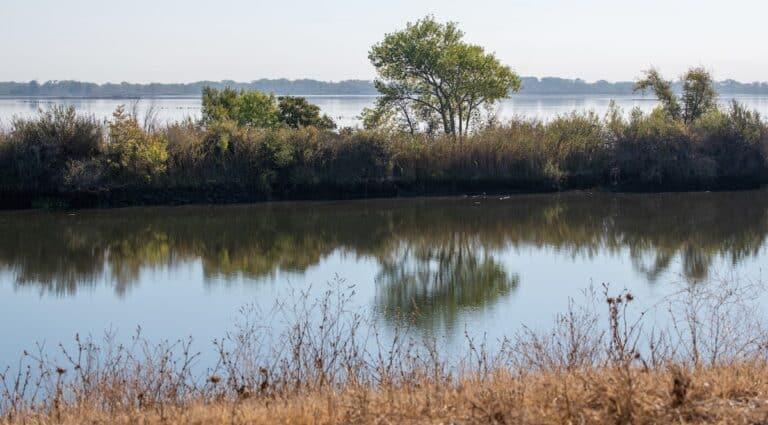Photo: The habitat surrounding the future location of the Lookout Slough Tidal Restoration Project, located in the Cache Slough complex. Photo by Florence Low / DWR
The habitat surrounding the future location of the Lookout Slough Tidal Restoration Project, located in the Cache Slough complex. Photo by Florence Low / DWR Our native species face numerous threats, including climate change, habitat loss, and invasive species. Therefore, effective management strategies must be implemented to avoid extinction and promote recovery. However, making decisions about managing species can be challenging for many reasons, such as high uncertainty, limited data, and multiple stakeholders with different interests.
Structured decision-making (SDM) is a process that can aid in species management by providing a framework for decision-making that is transparent, inclusive, and evidence-based. At the 2023 Interagency Ecological Program workshop, Dr. Brittany Davis and Dr. Rosemary Hartman with the Department of Water Resources gave a presentation on how structured decision-making was used to make decisions about summer-fall habitat actions for Delta smelt, a listed species, in 2022.
The summer-fall habitat action is part of the current regulatory framework for the long-term operations of the Central Valley Project and State Water Project. It is a conservation mitigation action intended to improve key physical habitat attributes and access to food for Delta smelt during summer and fall periods when habitat and food might be limited. It is thought that increasing access to good habitat could potentially improve the species’ growth, survival, and ultimate recruitment.
The goals of the summer-fall action are to maintain low salinity habitat in Suisun Marsh and Grizzly Bay, manage the low salinity zone overlap with turbid water and food, and establish a connected low salinity habitat from the Cache Slough complex through Suisun Marsh.
To meet those goals, a suite of management actions were proposed for habitat and food subsidy actions. Habitat actions include Fall X2, reoperating the Suisun Marsh salinity control gates to maintain low salinity habitat in the marsh, and a 100,000 acre-foot block of water during summer and fall in some years. Food web actions, which currently are experimental and optional, include the North Delta food subsidy action, the Sacramento Deepwater Ship Channel Action, and managed wetlands in Suisun.
PLANNING THE SUMMER-FALL HABITAT ACTION
The Delta Coordination Group (or DCG), consisting of federal, state, and public water agencies, plans the summer-fall habitat action. It is an annual process; each year, the Group evaluates the water conditions, water year forecasts, and Delta smelt distribution status and conditions and recommends the summer-fall habitat action through a systematic, structured decision-making approach. This approach includes developing the […]
Full article: mavensnotebook.com

